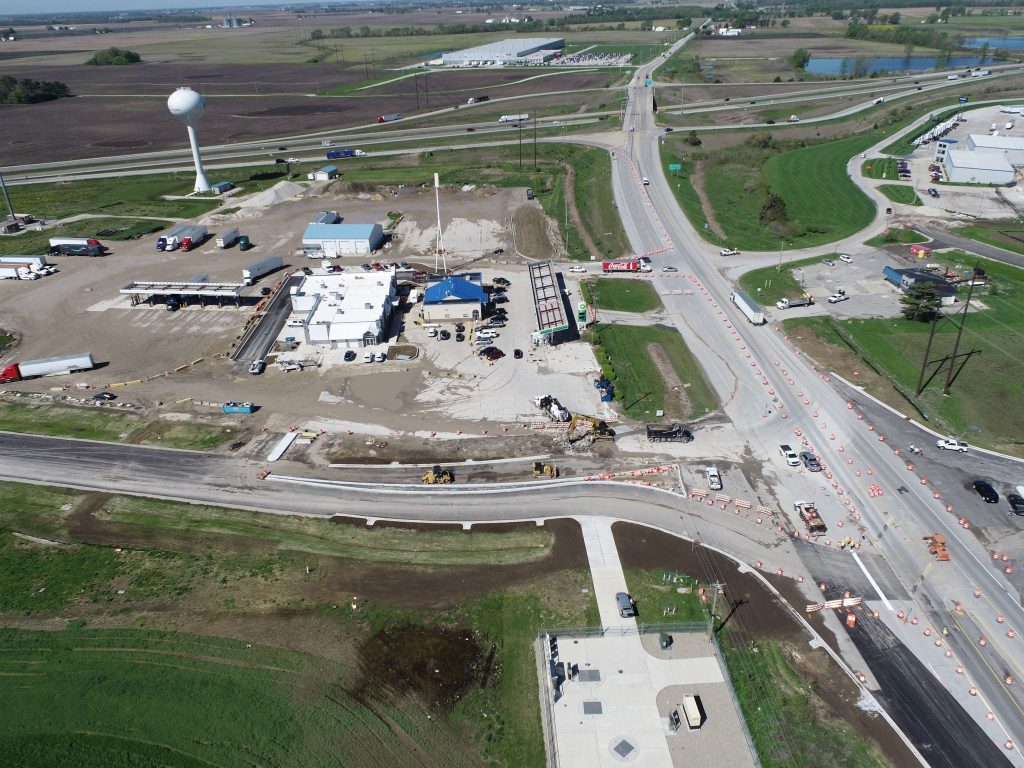Clinton County is ready to build upon the extraordinary infrastructure growth it has seen in the last 20 years. Much of Clinton County’s future economic expansion as an emerging market will build on the foundation of what has occurred in the last 20 years. Some items in this foundation are not even visible, but Clinton County is poised for extraordinary growth in the next decade or two. The foundation laid for the future includes:
- Drainage Problem involving over 600 acres on Frankfort’s east side has been addressed, potentially paving the way for further development on Frankfort’s east side.
- New water tower in Jefferson and new water tower at 28/I65 are built for utility infrastructure now capable of extending housing and industrial density from Jefferson to I-65 and beyond.
- Clinton County has a new Hospital capable of serving residents with the new complex and new equipment.
- Prairie Creek Park and the downtown Frankfort building renaissance has facelifted the entire City Center and County Hub, creating amenities for residents and future residents.
- Frankfort has enlarged its wastewater treatment capacity to prepare for future growth.
- The TIF district implementation is enabling funding and future development.
- ConAgra Foods Complex including new road to 28 from the site and expansion of existing industry is bringing economic vitality to the area.
- The Frankfort/Clinton County Regional Airport now incorporates IU Health Medivac helicopter and ground ambulance with 24/7/365 presence. The airport’s new “Adrian Marks” Terminal and filled hanger space are serving the area well, including the industrial base that wants to see a strong airport presence. Plans are on the table to add grooving to 9-27 runway. This will allow larger jets to safely land and take off on the 5000-foot runway. The Airport is also strategically close to the new LEAP district 10 miles to the south in Northern Boone County.
- Frankfort and Clinton County is surrounded by Billion Dollar projects in all directions. LEAP project to the south, new chip manufacturing and rapid growth in Tippecanoe County to the Northwest, Battery infrastructure and large infrastructure growth in Tipton/Howard County area to the East and Northeast.
- Clinton County itself is working on more higher paying industry carefully picked to be able to contribute to the tax base while also contributing to the pool of high paying jobs. Announcements along this line may be forthcoming fairly soon.

Most of these observations were made by Alan Dunn, Clinton County’s County Council President. Dunn spoke Thursday at the Frankfort Rotary Club. Dunn joined the Clinton County Council 19 years ago in January 2007 and has seen or been a part of several of these foundational changes that will soon pave the way to future growth in Clinton County.
Dunn said one of the developments residents will see in Clinton County’s economic expansion is an intense focus on new housing. All types of housing at all density levels are needed, from multi-unit to owner-occupied family homes to Executive housing.
Dunn said Clinton County is now, finally, in the best fiscal position it has been in years. He is optimistic Clinton County is prepared for the next “dip” which will someday occur, just like 2008 recession occurred. The difference is Clinton County is much more capable now of weathering the storm than the County layoffs and financial stress that occurred in 2008 lasting for nearly a decade thereafter.
The most pressing financial stressor now is the fiscal realities set loose by Senate Bill 1 passed in the last Indiana Legislative Session. Dunn said absolutely no one knows for sure what lies ahead fiscally for cities, towns and counties with the changes caused by Senate Bill 1. Dunn said fortunately the holes in the budget are being studied carefully now at local and state levels and time still exists before implementation in 2027. Nevertheless, clarity is needed soon so towns, cities, schools and counties can plan. Dunn thinks this stress will create “Forced Collaboration” between local jurisdictions and this collaboration might actually have a positive effect on agile and adaptable communities in the long run.
Challenges abound to handle the growth anticipated in Clinton County in the next decade. Clinton Prairie may soon run out of classroom space and have to build, Dunn said. In the face of growth, most residents in Clinton County do not want to lose the County’s rural character, including its values rooted in its agricultural base.
Dunn was asked about the progress at the Banderas Point project at the intersection of 28 and I-65. There is now a delay with escalating costs due to discovery of unanticipated “spongy” soil making construction on this type of ground difficult. While the solution is in process, project stakeholders are looking at options to address this curveball.
Dunn is optimistic about Clinton County’s economic future and quality of life and predicts the infrastructure progress made in the last two decades will serve the County well for the next two decades and beyond.

– Photo courtesy of Clinton County, Indiana
